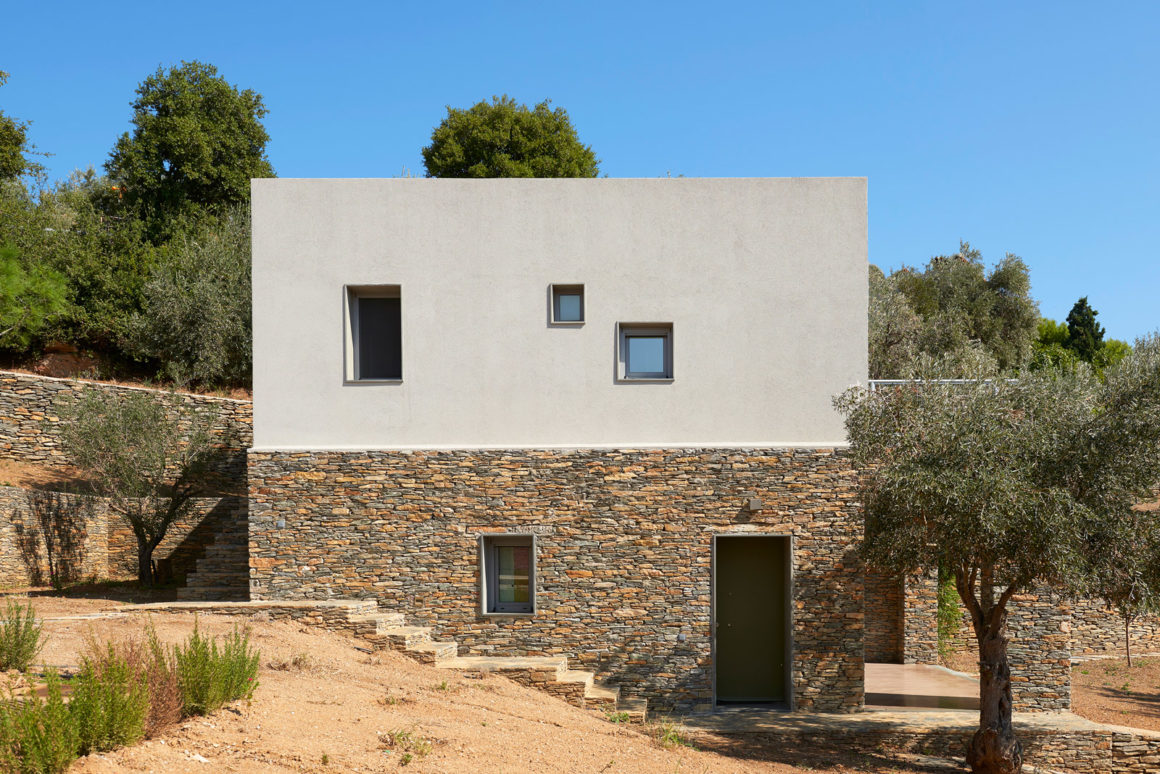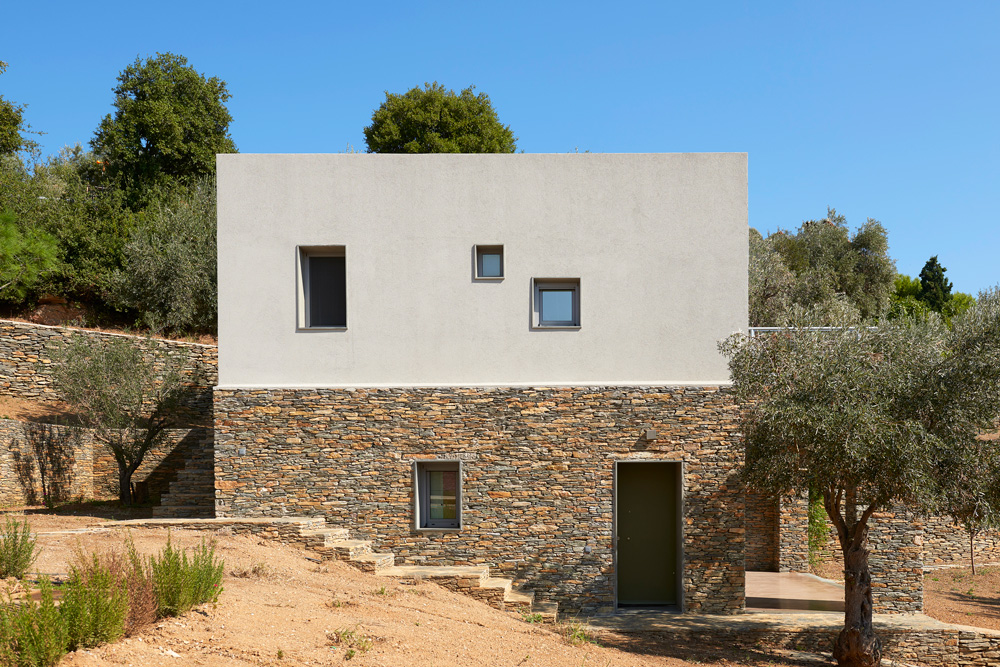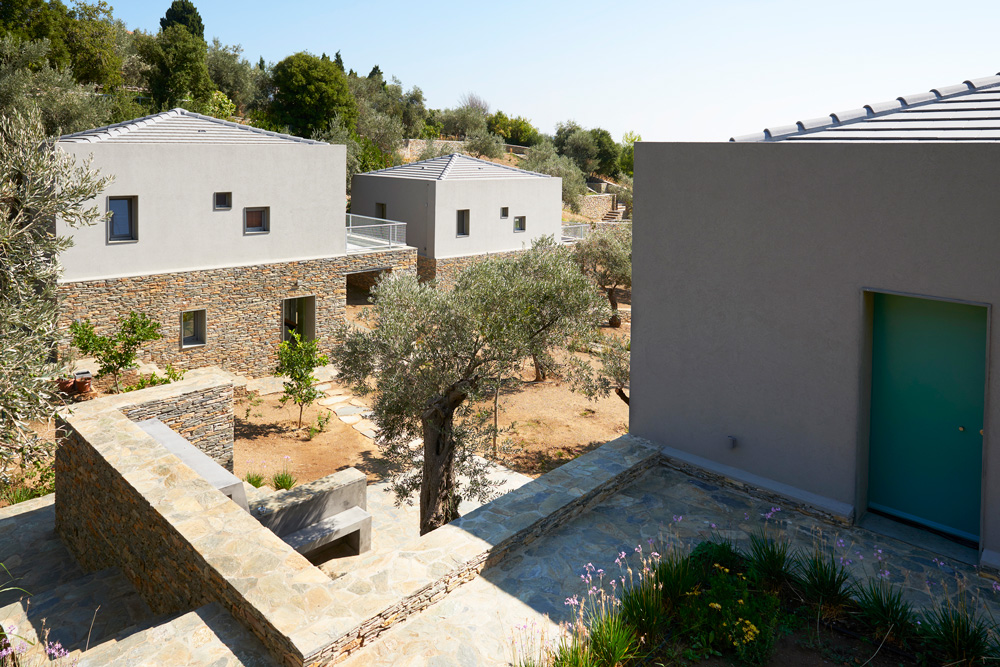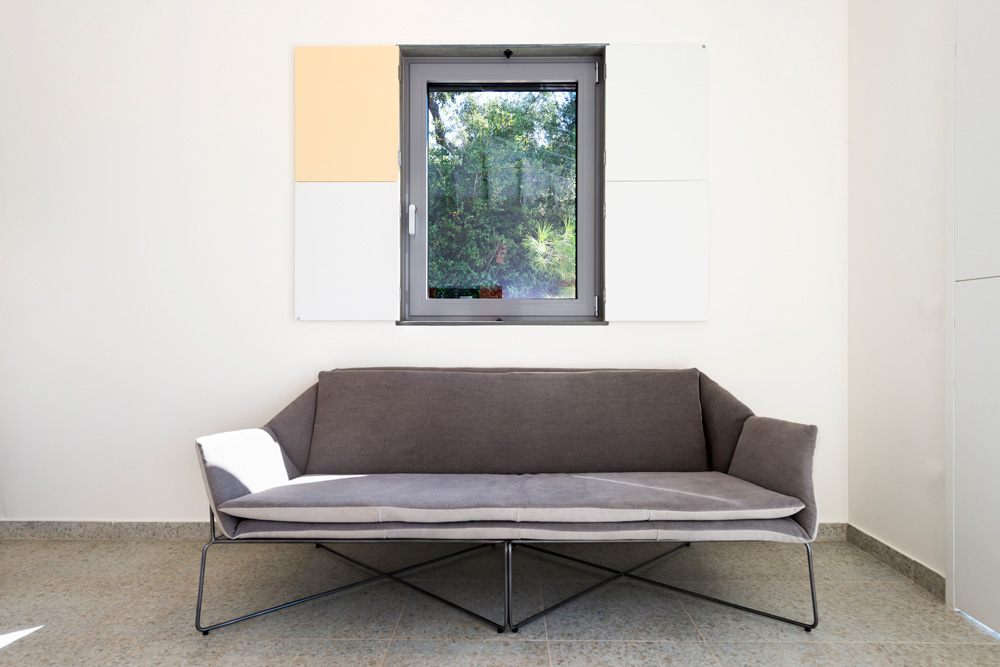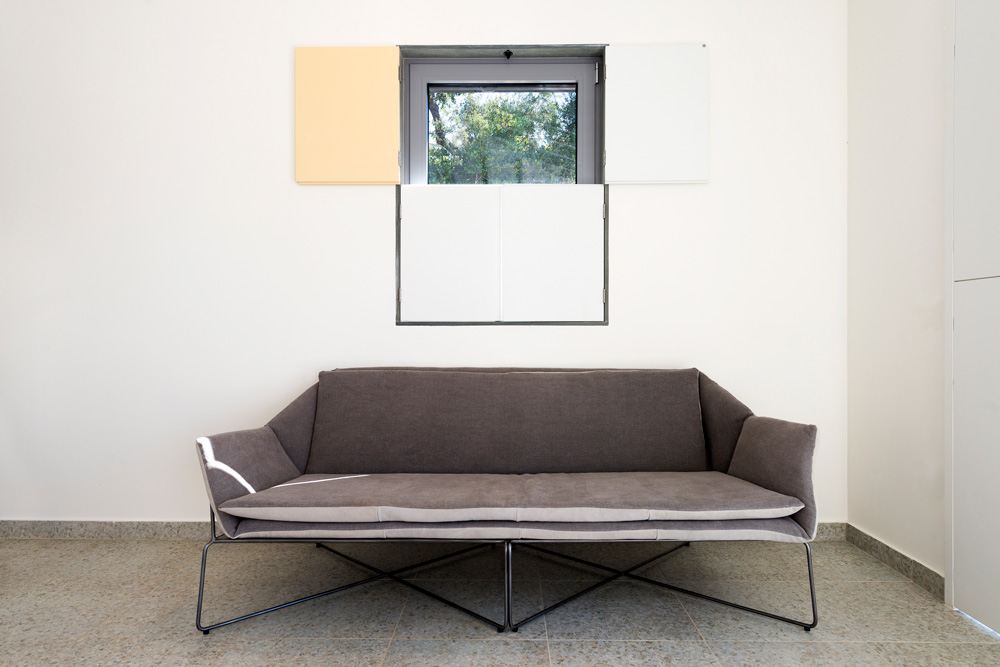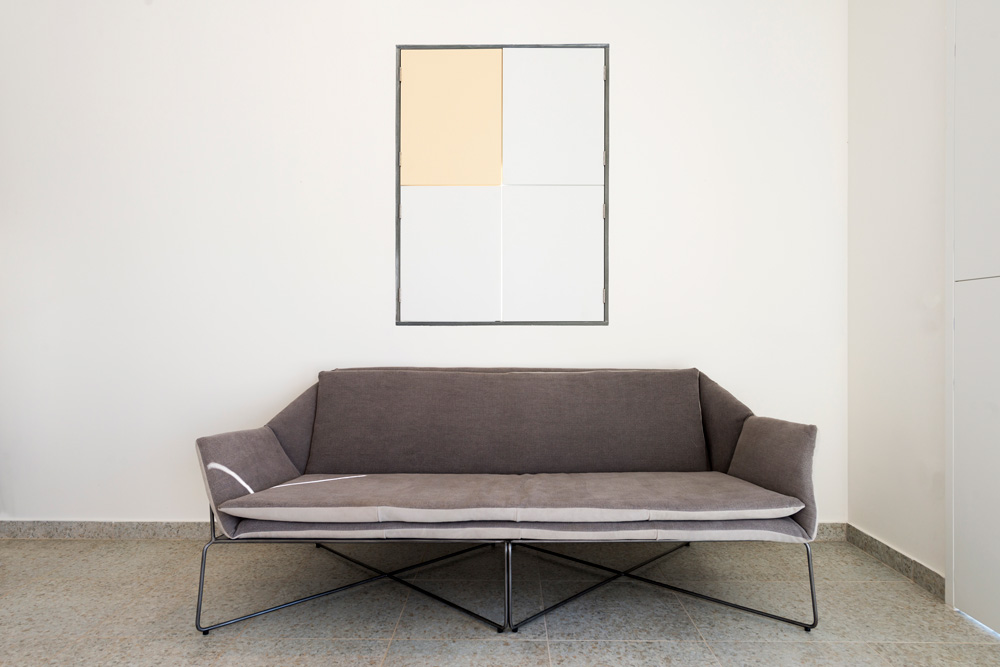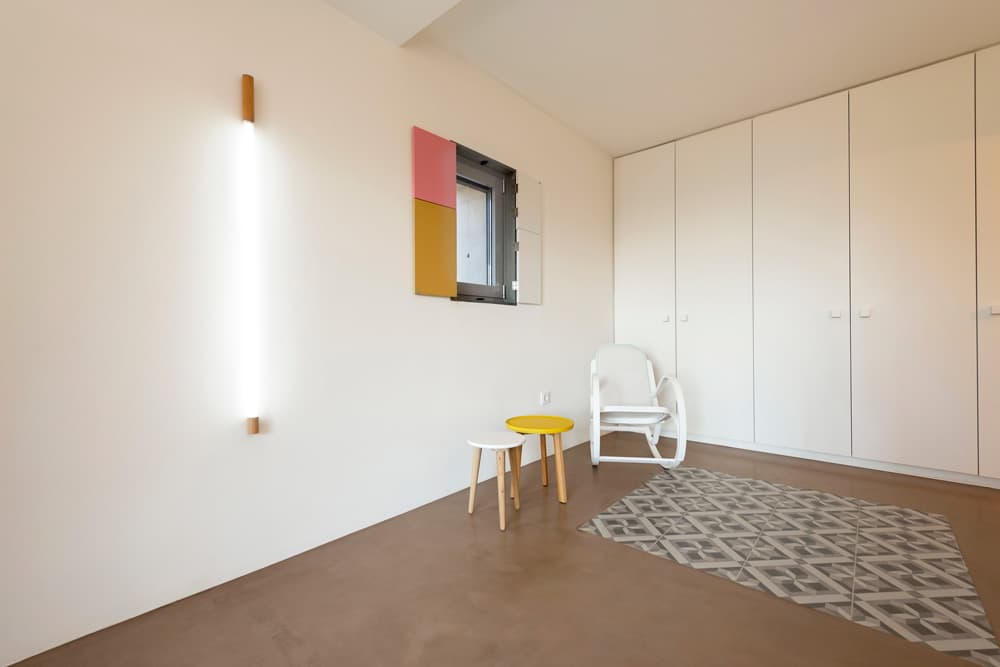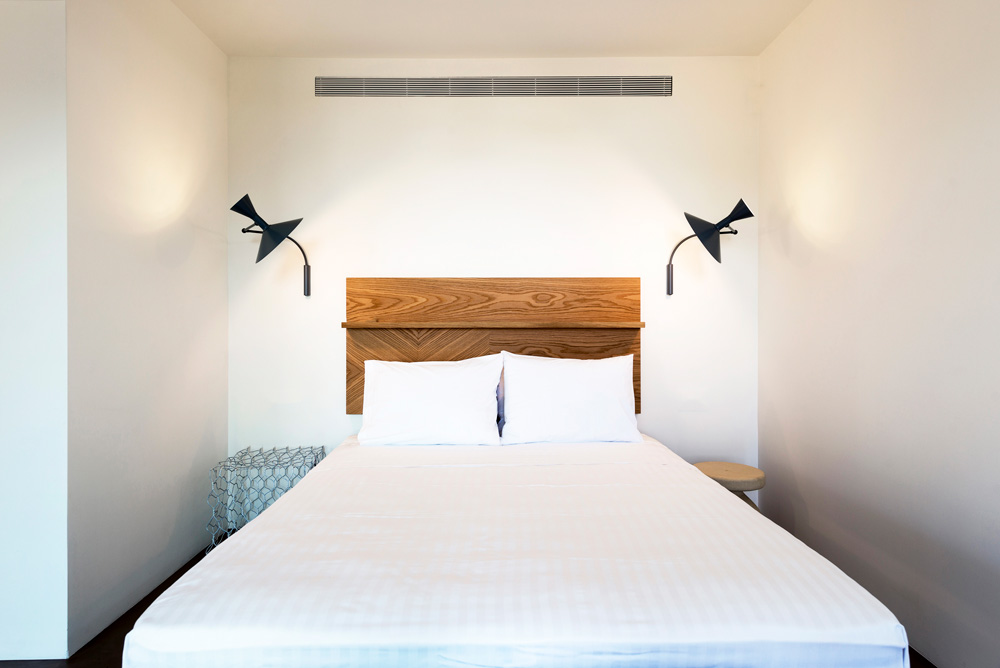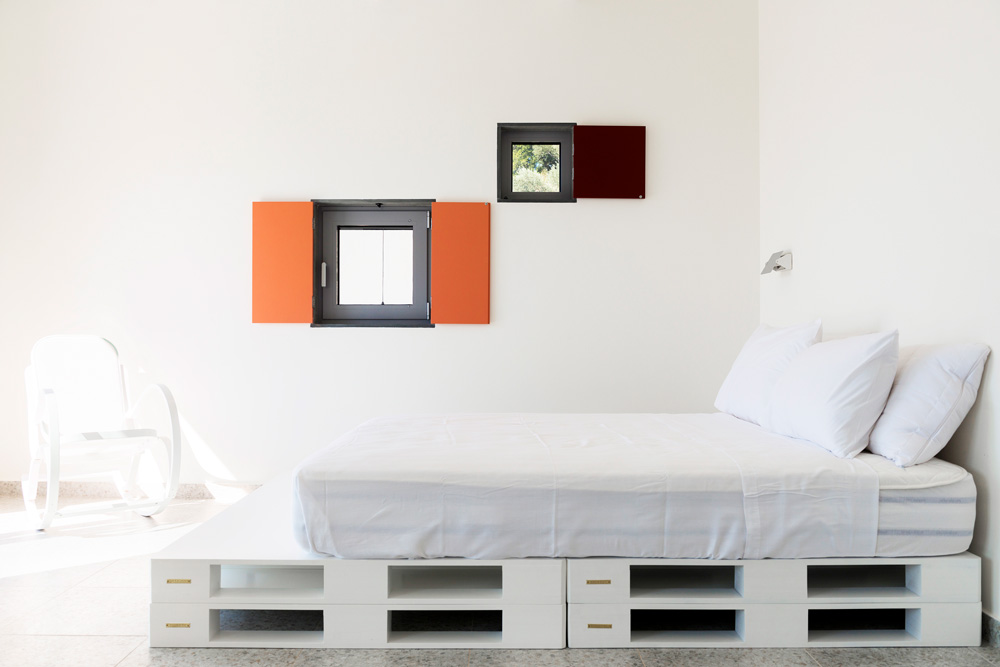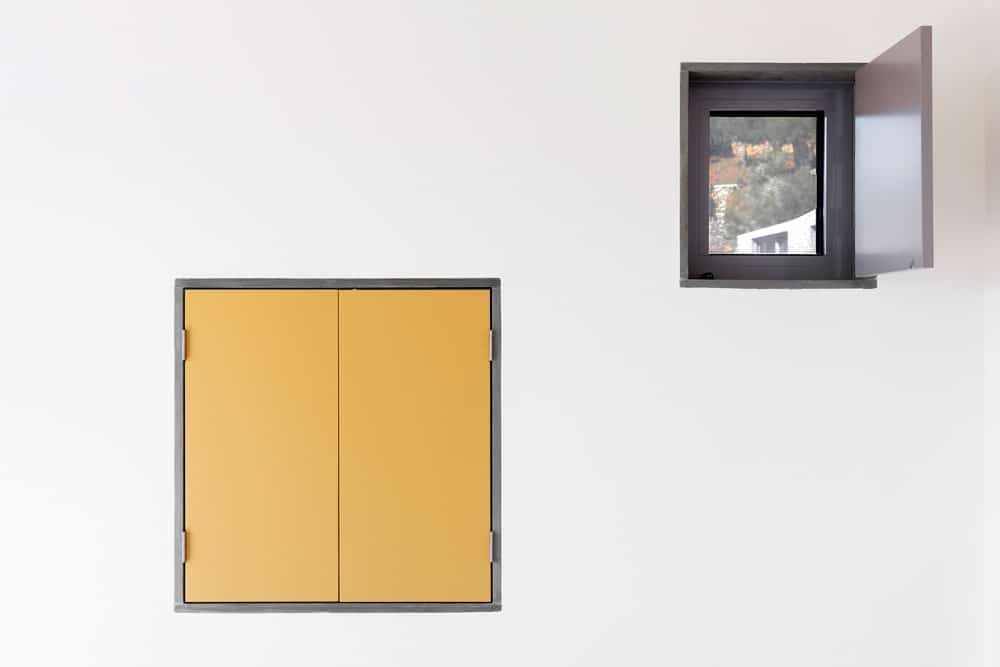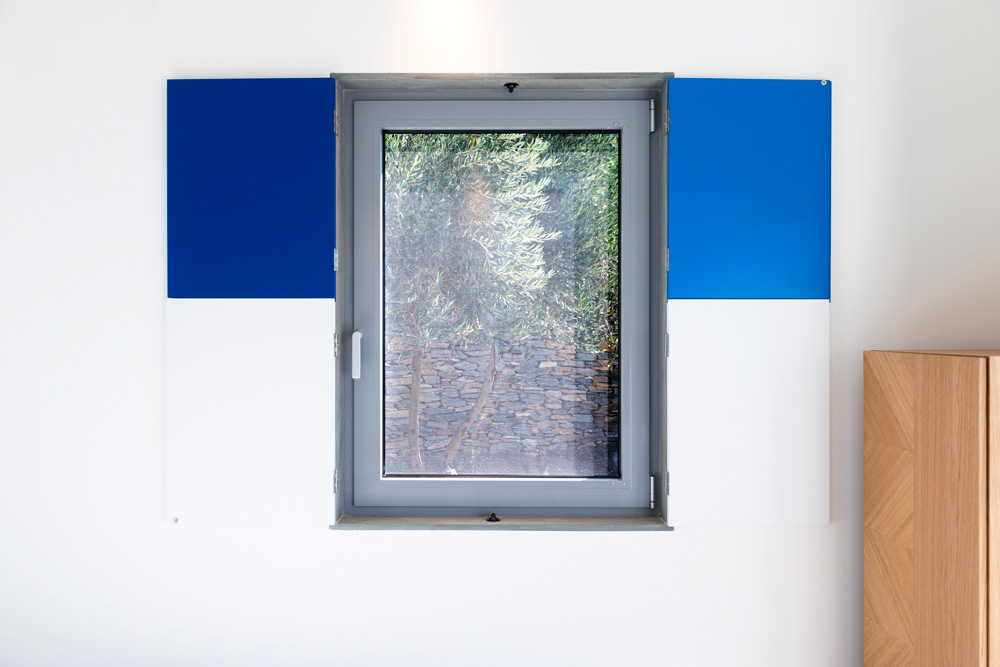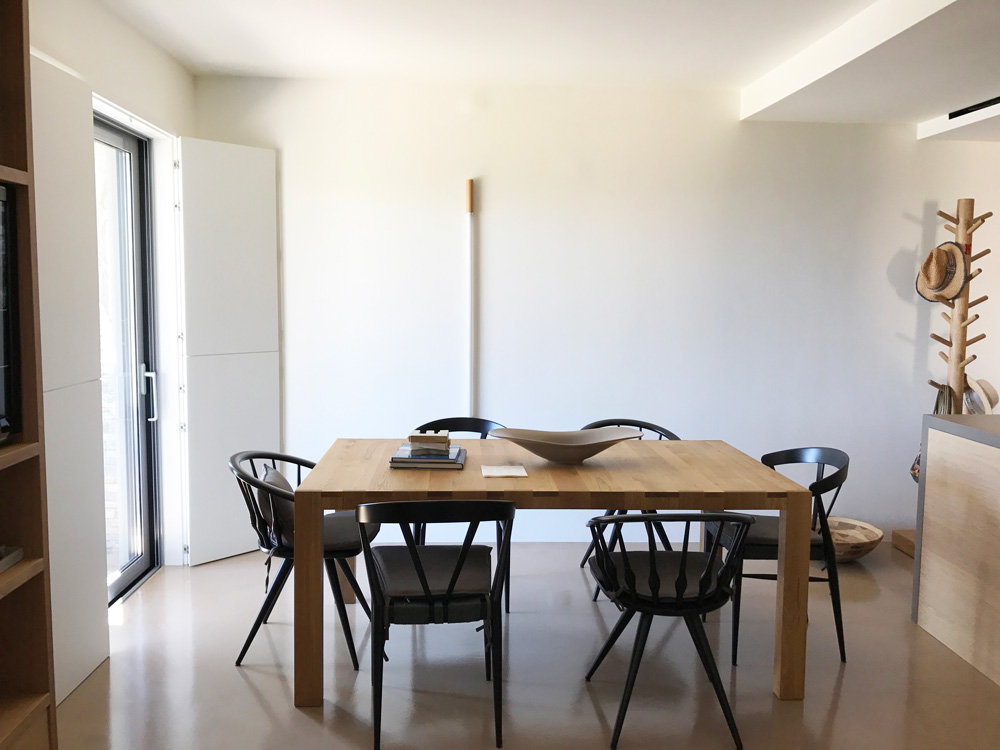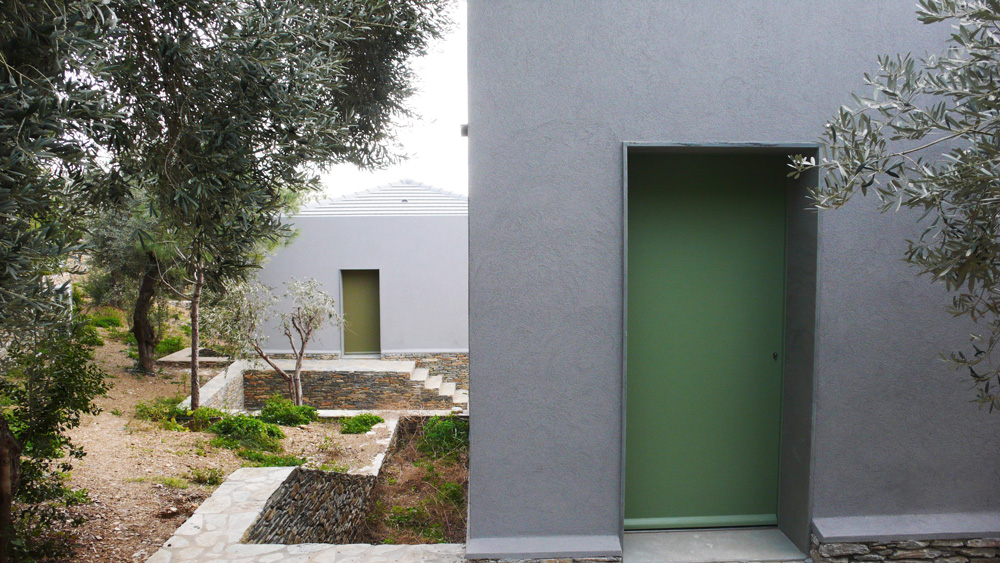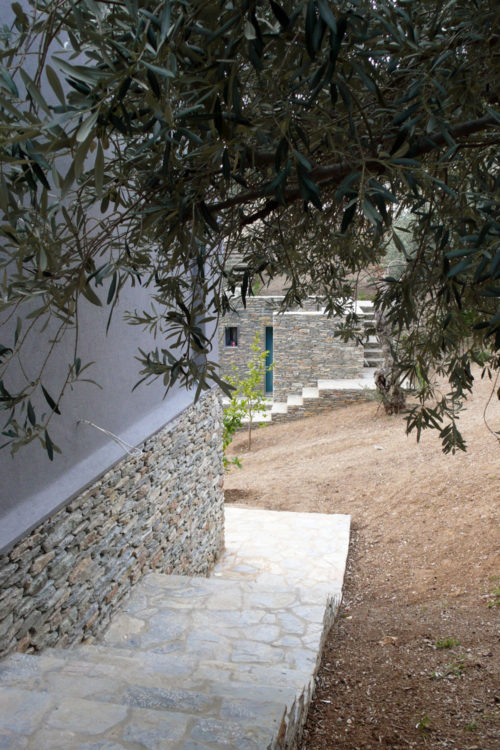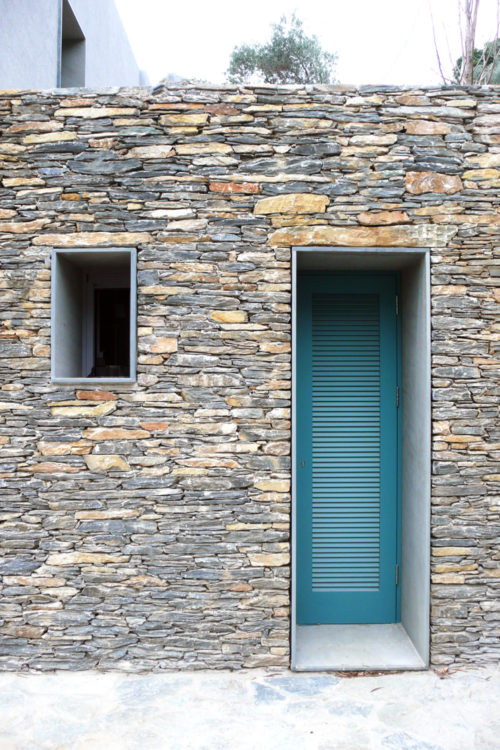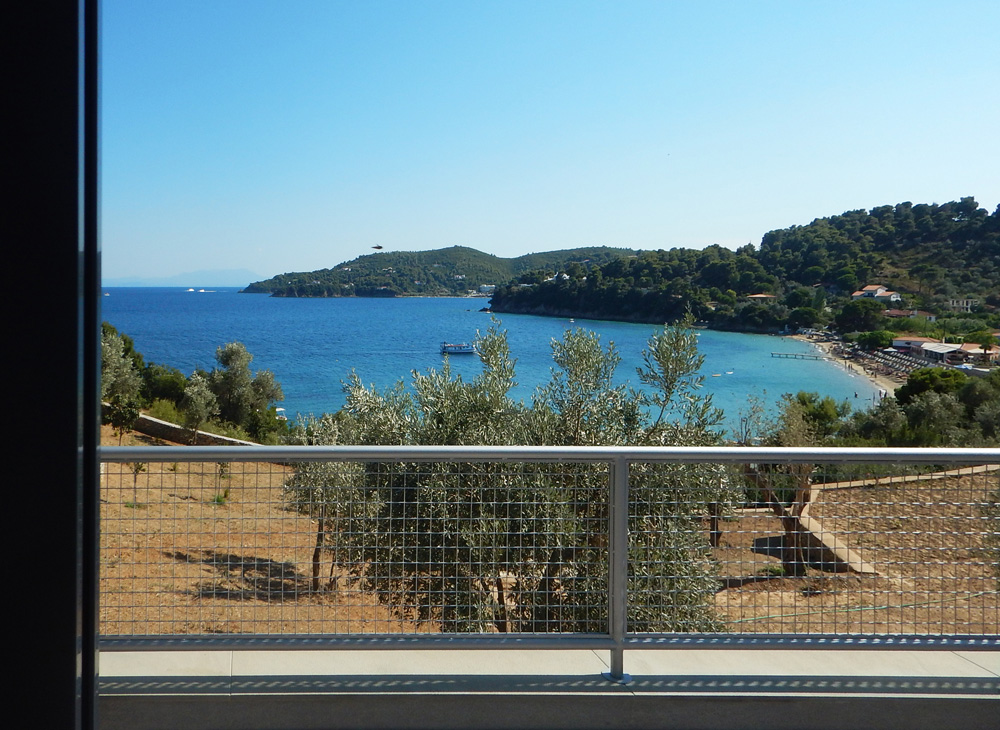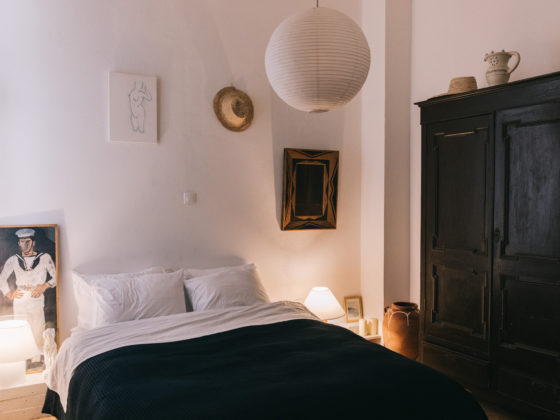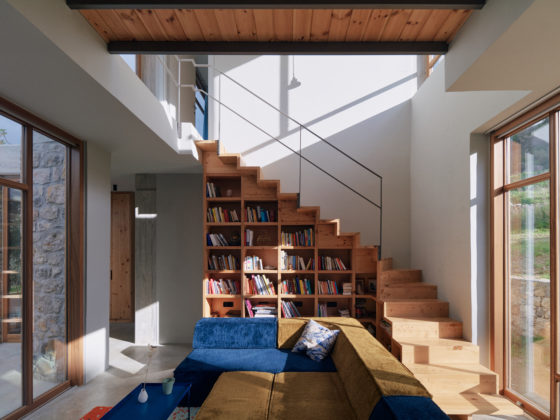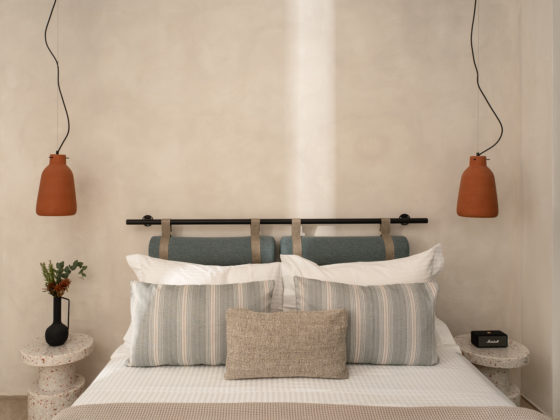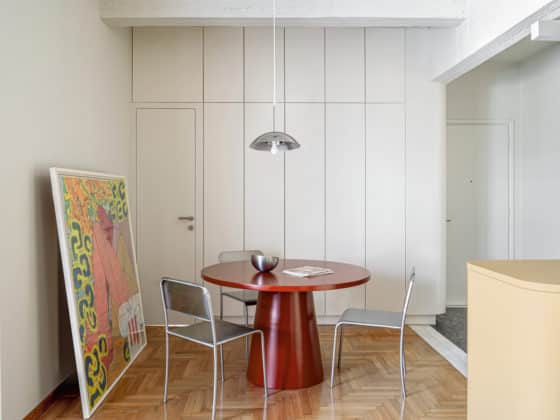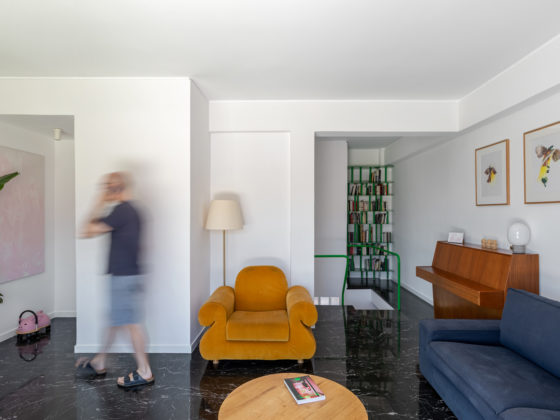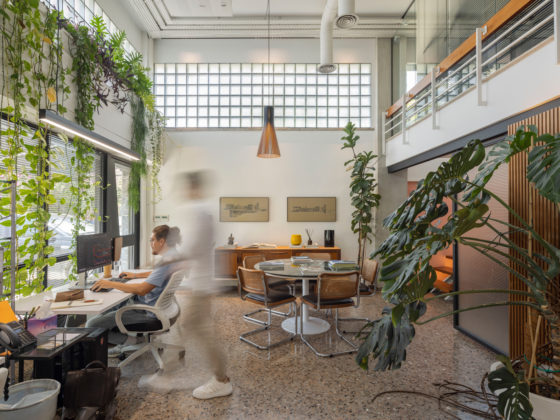These partially completed buildings were left abandoned for years; they exemplify the pre-financial crisis construction boom in Greece and it’s after effects. Their repetitive volumes and lack of site planning came in stark contrast to the beauty of the surrounding landscape. No further volumetric alteration was allowed by local regulations. The goal of the refurbishment was softening their impact: an exercise in reduction.
Surface, depth, color and texture became the architectural tools.
A subtle and playful differentiation is made between the three buildings through the use of materials and colors. Ground floors are clad in local field stone similar to the dry stack stone walls existing around the site. The painted and insulated upper half has a slightly different hue responding to its orientation. The plaster render walls are warmer in the north, colder in east and west. New window openings were cut and framed in grey marble. Exterior stairs, eliminated the need for interior ones and added more space in the previously tight rooms. These stairs gradually become pathways to navigate the landscape.
Wooden shutters shield the rooms from the sun. In closed state they form geometric wall paintings inspired by the compositions of the artist Blinky Palermo. Low cost and durable finishes were selected to withstand heavy use, paired with custom details and furniture.
*Shortlisted for “Best New Architecture in an Existing Building” by DOMa – Greek Architecture Awards.
